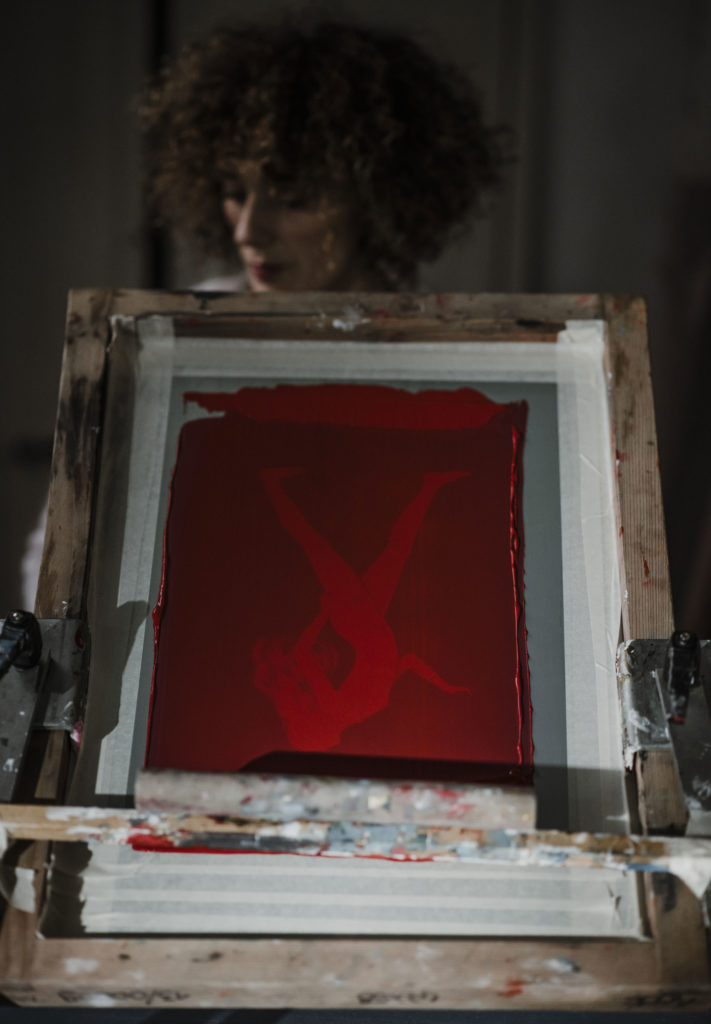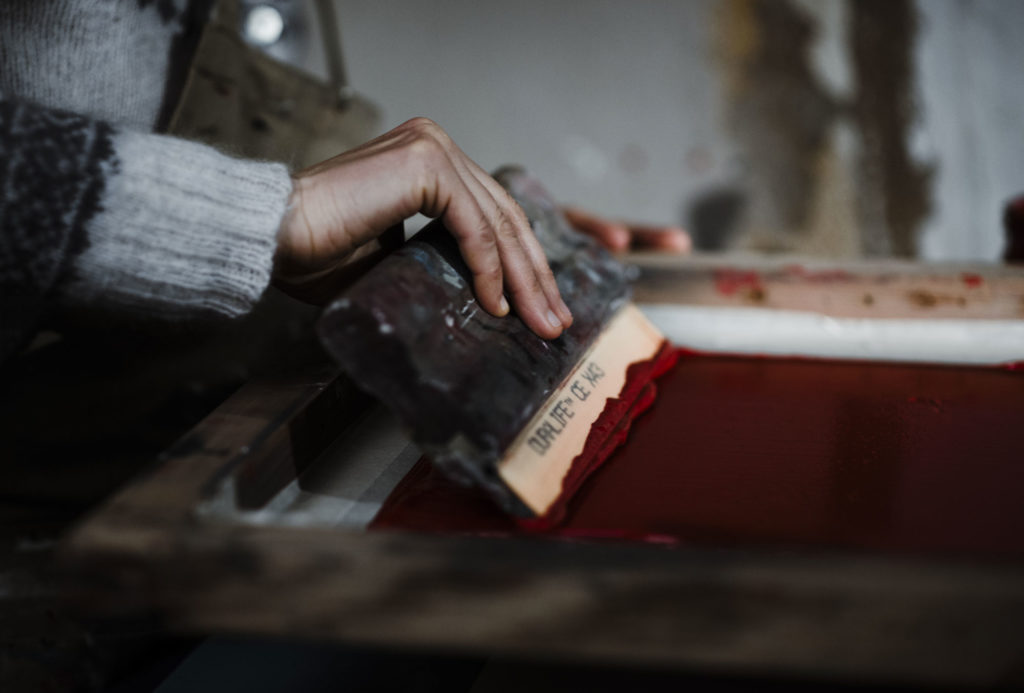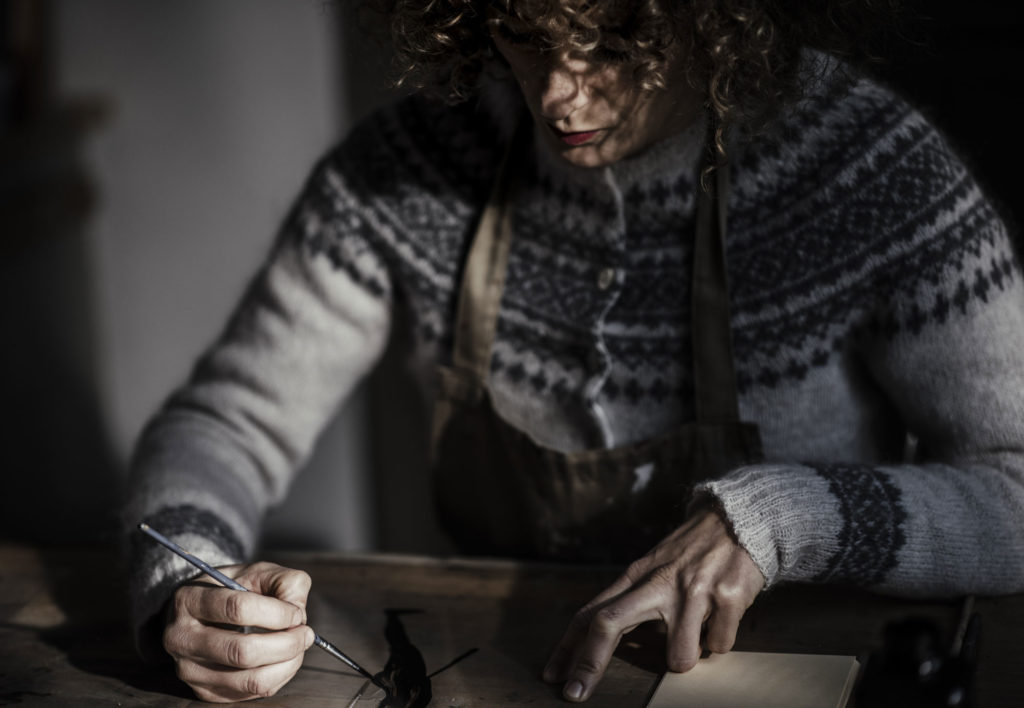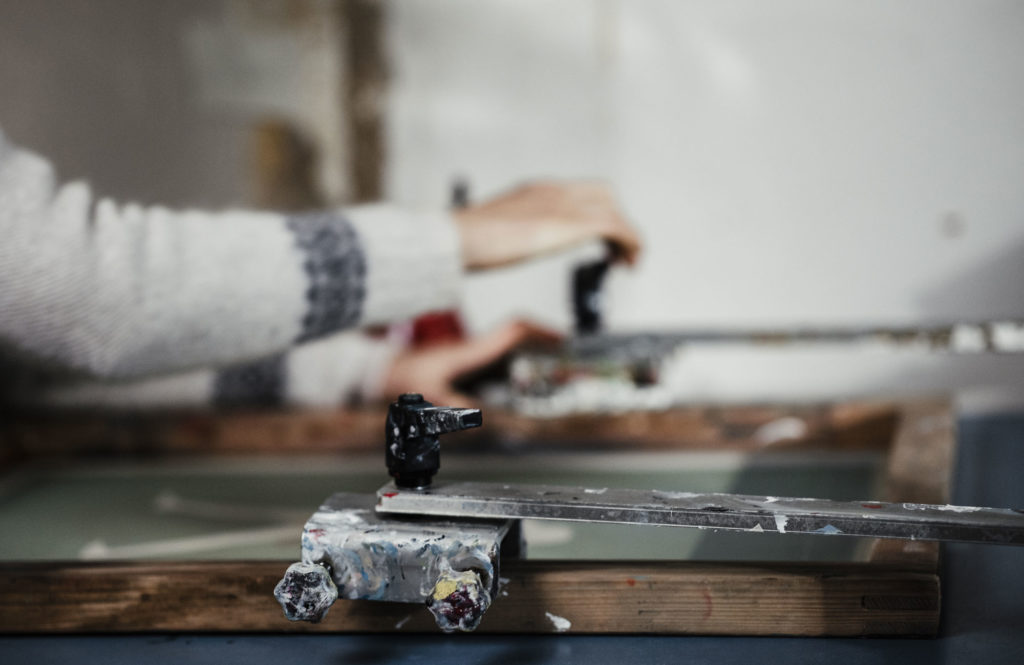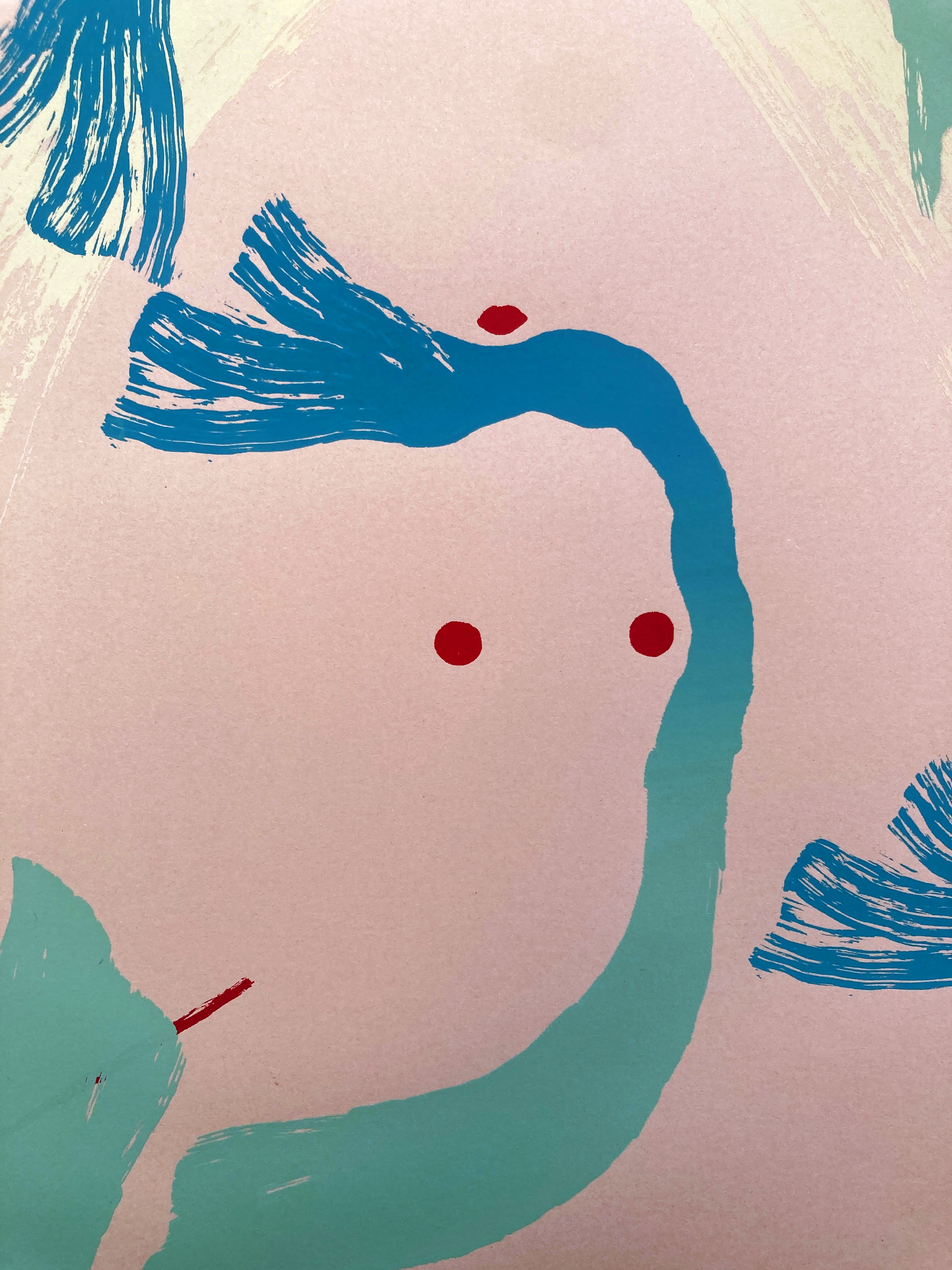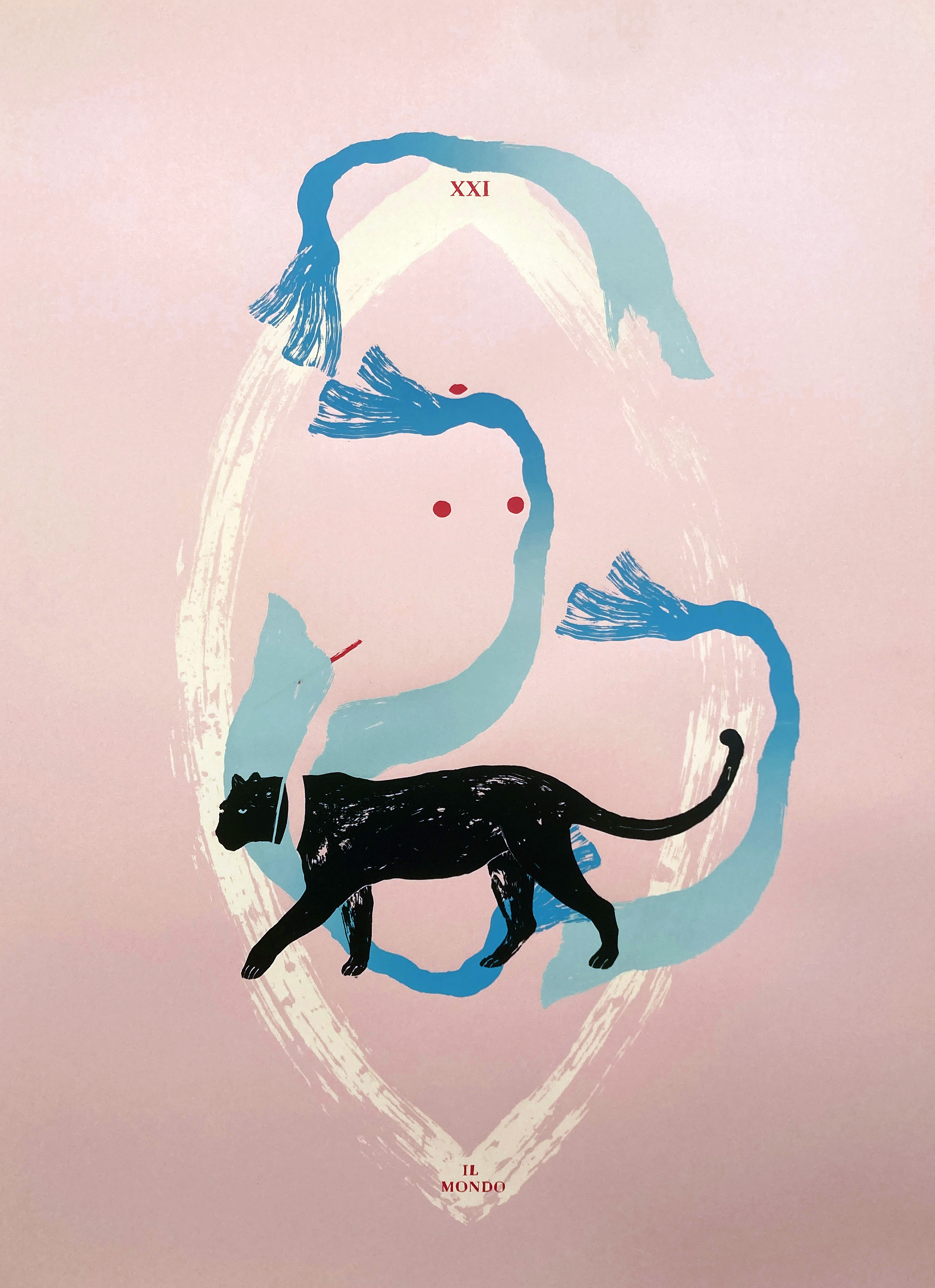Serigrafia
Stampe d'arte in serigrafia:
Le illustrazioni in vendita su questo shop sono realizzate personalmente dall’autrice con la tecnica della serigrafia, un processo di stampa artigianale che consiste nel trasferire un disegno da una matrice in tela – il telaio serigrafico – su carta.
Elisa Talentino utilizza una tecnica sperimentale in cui le matrici sono realizzate dipingendo un originale direttamente a mano sulle pellicole, con un processo associabile a quello dell’incisione (le parti in negativo sono incise con punte, le texture sono realizzate in monotipo).
In serigrafia i colori di cui è composta l’immagine vengono stampati uno per volta; tramite un procedimento fotografico il disegno viene impressionato sul telaio serigrafico, e stampato manualmente un colore alla volta per mezzo di una apposita spatola (racla), senza l’ausilio di stampanti.
Se ipotizziamo quindi una stampa formata da tre colori (bianco, rosso e blu) con una tiratura di cento esemplari, si devono realizzare a mano tre matrici (una per colore).
A questo punto viene stampato cento volte il bianco su tutti i fogli, che poi vengono messi ad asciugare.
Poi sugli stessi fogli viene stampato cento volte il livello del rosso, che va a sovrapporsi al bianco, e messo ad asciugare.
Infine viene stampato il blu, sempre per cento volte sugli stessi fogli.
La stessa tiratura a con una stampa a dieci colori significa quindi mille passaggi di colore.
Una stampa in serigrafia è quindi un prodotto artigianale realizzato con estrema cura, che parte da un originale per diventare un multiplo realizzato a mano in ogni parte della lavorazione.
Ogni esemplare è numerato e firmato sul fronte.
Silk-screen printing works:
All the illustrations for sale in this shop are personally made by the artist with the screen printing technique, which is an handmade process consisting of transferring a drawing from a silk-screen frame to paper.
Elisa Talentino uses an experimental technique, in which the screens are realized by handmade painting the original drawing directly on the acetate. This process is similar to the etching (the negative parts are engraved with gouges, whereas the textures are monotype realized).
The colors are printed one by one: the drawing is engraved on the silk-screen frame through a photographic procedure, with a specific squeege, without usign any printer.
If we hypotisize to have a three color print (white, red and blue) and we want to do one hundred prints, it is necessary to realize three different frames (one for each color).
At this point we’ll have to print the white color one hundred times on each paper and let it dry. Then, on the same papers, we’ll have to print the red level one hundred times too, overlapping the white one, and let it dry. Lastly, we’ll have to print the blue color, again for one hundred times on the same papers.
Therefore, a one hundred printing of ten color print needs one thousend color transfers.
For these reasons, a screen printing work is an artisan product realized with an outstanding attention: it originates from a master copy and it develops into a multiple which is handmade realized in every single part of its production. Each sample is numbered and signed on the front.
ph Eunice Brovida
